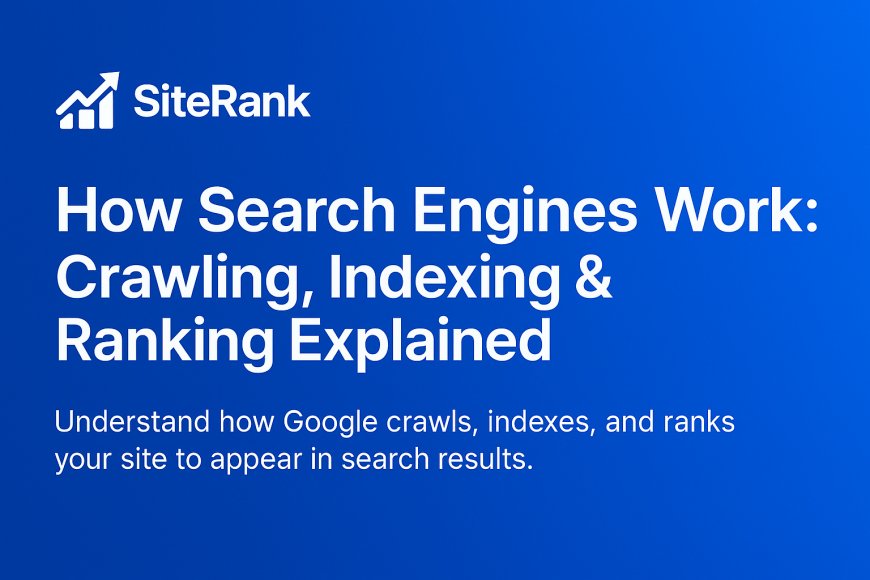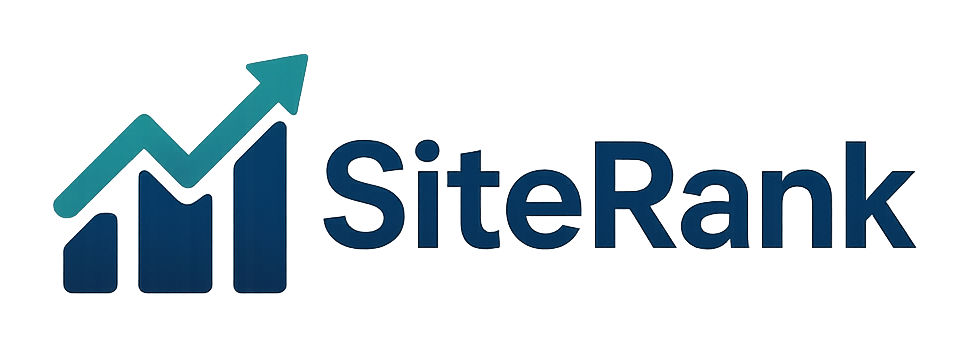How Search Engines Work: Crawling, Indexing & Ranking Explained
Understand how Google crawls, indexes, and ranks your site to appear in search results.

Introduction
You type something into Google, and in less than a second, millions of results appear. But have you ever wondered how that actually works? How does Google decide which websites deserve to be on the first page, and which get buried on page 10?
The answer lies in three key processes: Crawling, Indexing, and Ranking.
In this guide, we’ll break down how search engines work step by step, why each process matters for SEO, and how you can optimize your site so it doesn’t get left behind.
Chapter 1: What Are Search Engines?
A search engine is like a giant digital library. Its job is to:
-
Discover new pages (crawling)
-
Store them in its catalog (indexing)
-
Recommend the best ones to users (ranking)
The most popular search engine by far is Google, holding over 90% of the global market share. Others include Bing, Yahoo, and DuckDuckGo.
Chapter 2: Crawling – How Google Finds Your Site
Crawling is the first step. Google uses automated bots (also called spiders or Googlebot) to browse the internet and find web pages.
How Crawling Works:
-
Bots start by visiting known websites.
-
They follow links on those sites to discover new pages.
-
Each page is scanned for content, links, and structure.
👉 Pro Tip: If your site has poor internal linking, Googlebot may not find all your pages.
How to Optimize for Crawling:
-
Submit your sitemap in Google Search Console.
-
Use a clean internal link structure.
-
Avoid blocking important pages in
robots.txt. -
Fix broken links (404 errors).
Chapter 3: Indexing – How Google Stores Your Pages
Once crawled, your page goes into Google’s database, called the index. Think of it like storing a book in a library’s catalog.
If your page isn’t indexed, it won’t appear in search results.
Why Pages Don’t Get Indexed:
-
Duplicate or thin content
-
Low-quality content
-
Blocked by robots.txt
-
Technical issues (crawl errors)
How to Ensure Indexing:
-
Use unique, high-quality content
-
Check “Coverage” in Google Search Console
-
Make sure your site isn’t “noindex” accidentally
-
Fix canonical tag issues
Chapter 4: Ranking – How Google Chooses Who Comes First
After crawling and indexing, Google decides where your page should appear. This is called ranking.
Google’s ranking is based on 200+ factors, but the main ones are:
-
Relevance: Does your page match the search intent?
-
Authority: Do you have quality backlinks?
-
User Experience: Is your site fast, mobile-friendly, and easy to use?
-
Content Quality: Is it original, helpful, and detailed?
Example:
-
Search: “Best pizza in Patna”
-
Google considers: Location, reviews, content, authority
-
Then ranks the most relevant, trustworthy sites at the top
Chapter 5: SEO Strategies to Improve Crawling, Indexing, and Ranking
For Crawling:
-
Submit XML sitemaps
-
Keep a flat site structure (3 clicks or less to reach any page)
-
Regularly update your content
For Indexing:
-
Avoid duplicate content
-
Use structured data (schema)
-
Publish long-form, helpful content
For Ranking:
-
Do proper keyword research
-
Build high-quality backlinks
-
Optimize speed and mobile-friendliness
-
Focus on user intent
Chapter 6: Tools to Help You
-
Google Search Console → Crawl & index reports
-
SiteRank → Full SEO audits, crawlability issues, and ranking reports
-
Screaming Frog → Advanced crawling tool
-
Ahrefs / SEMrush → Backlink and keyword insights
FAQs
Q1. How often does Google crawl websites?
Depends on your site. Big sites (news, e-commerce) get crawled daily. Smaller sites may take days or weeks.
Q2. Can I force Google to index my site?
Yes. Use the “Inspect URL” tool in Google Search Console and request indexing.
Q3. Why is my page not showing on Google?
It might not be indexed, or it could be too new, low quality, or blocked by settings.
Conclusion
Search engines may feel like magic, but the process is simple: Crawling, Indexing, Ranking. If you want your site to appear on Google, you must make it easy to crawl, index, and rank.
👉 Run a SiteRank SEO Audit today and instantly check crawl errors, indexing issues, and ranking opportunities for your website.
What's Your Reaction?
 Like
0
Like
0
 Dislike
0
Dislike
0
 Love
0
Love
0
 Funny
0
Funny
0
 Angry
0
Angry
0
 Sad
0
Sad
0
 Wow
0
Wow
0





